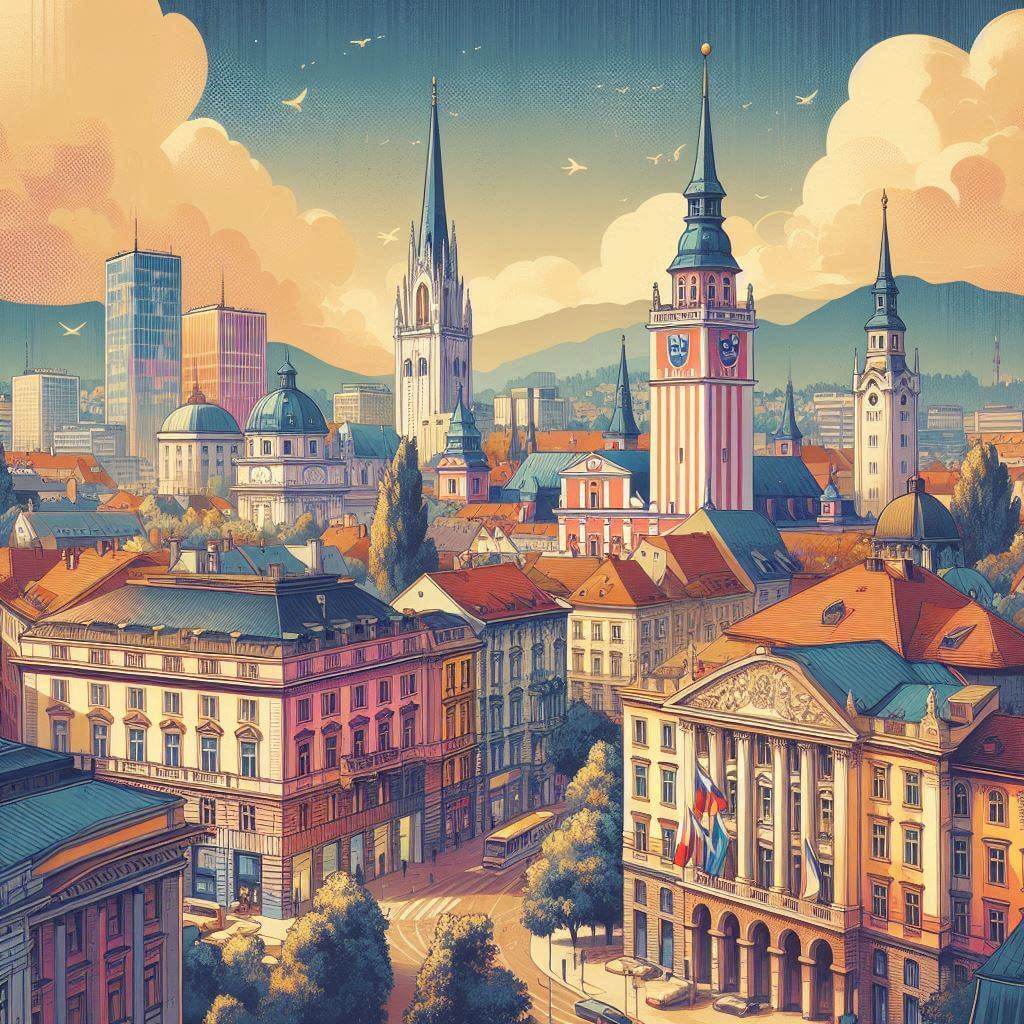The flag of Slovenia features three horizontal stripes of white, blue, and red, with the national coat of arms positioned in the upper hoist corner. This design encapsulates Slovenia's rich history, natural beauty, and aspirations as a modern European nation.
Slovenia information
| National Flag Day | — |
| Sovereign state | Yes |
| Official name | Republic of Slovenia |
| Capital | Ljubljana |
| Population | 2,108,977 |
| Area | 20,273 km² |
| Currency | Euro (€) (EUR) |
| Language | Slovene |
| Continent | Europe |
| Region | Central Europe |
| Subregion | South Central Europe |
| Borders | Austria, Croatia, Hungary, Italy |
| Timezone | Central European Time (CET) UTC+1 |
| Calling code | +386 |
| Top-level domain | .si |
History of the Slovenian Flag
 The current Slovenian flag was officially adopted on June 27, 1991, following Slovenia's declaration of independence from Yugoslavia. However, its roots can be traced back to the 19th century Pan-Slavic movement. The flag's design evolved through various historical periods, including Slovenia's time as part of Yugoslavia, before settling on the current version that uniquely represents the newly independent nation.
The current Slovenian flag was officially adopted on June 27, 1991, following Slovenia's declaration of independence from Yugoslavia. However, its roots can be traced back to the 19th century Pan-Slavic movement. The flag's design evolved through various historical periods, including Slovenia's time as part of Yugoslavia, before settling on the current version that uniquely represents the newly independent nation.
Symbolism and Design of the Slovenian Flag
Each element of the Slovenian flag carries deep symbolic meaning:
- The white stripe represents Mount Triglav, Slovenia's highest peak, and the purity of the nation's intentions.
- The blue stripe symbolizes the Adriatic Sea and the numerous rivers crisscrossing the country.
- The red stripe stands for the Slovenian people's bravery and the bloodshed in their fight for independence.
- The coat of arms features Mount Triglav in white against a blue background, representing Slovenia's natural beauty and mountainous landscape.
- The three golden stars arranged in an inverted triangle are derived from the coat of arms of the Counts of Celje, a prominent medieval Slovenian noble family.
- The two wavy blue lines at the bottom of the coat of arms represent Slovenia's access to the sea and its major rivers.
Usage and Significance of the Slovenian Flag
 The Slovenian flag is a powerful symbol of national identity and sovereignty. It is prominently displayed on government buildings, schools, and during national celebrations such as Statehood Day on June 25. The flag also represents Slovenia in international forums, including the European Union and United Nations, symbolizing the country's place in the global community and its commitment to European values.
The Slovenian flag is a powerful symbol of national identity and sovereignty. It is prominently displayed on government buildings, schools, and during national celebrations such as Statehood Day on June 25. The flag also represents Slovenia in international forums, including the European Union and United Nations, symbolizing the country's place in the global community and its commitment to European values.
Interesting Facts About the Slovenian Flag
- The Slovenian flag is often confused with the Slovak flag due to their similar designs. To differentiate, Slovenia added its coat of arms to the flag.
- The coat of arms was designed by sculptor Marko Pogačnik and is officially described as "a shield with the outlines of Mount Triglav in white against a blue background at the center."
- The flag's colors are often referred to as the "Slavic tricolor," shared by many Slavic nations and symbolizing their common heritage.
- During Slovenia's independence process, the new flag with the coat of arms was sometimes flown alongside the old Socialist Republic of Slovenia flag, symbolizing the transition to democracy.